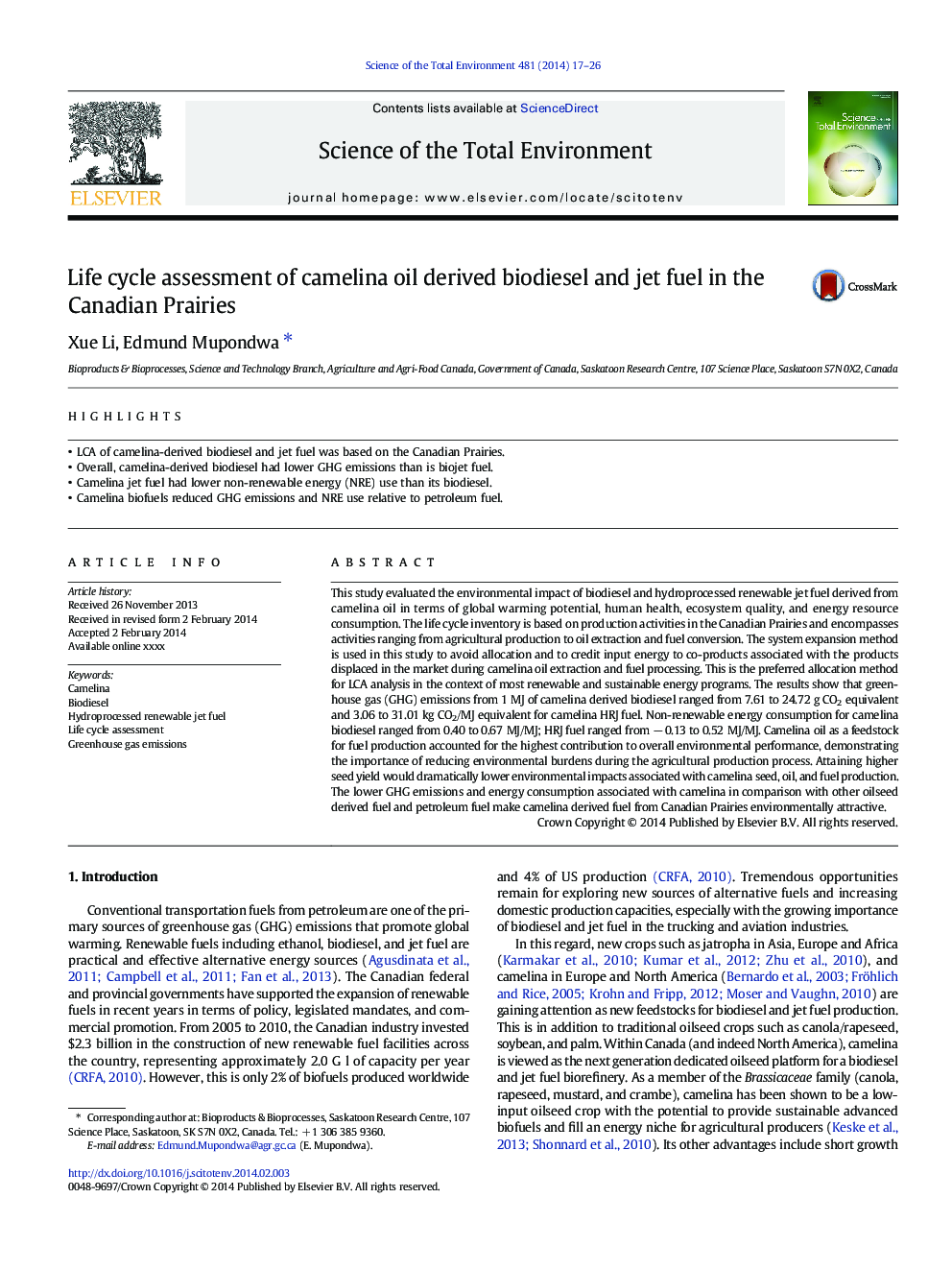| Article ID | Journal | Published Year | Pages | File Type |
|---|---|---|---|---|
| 6330826 | Science of The Total Environment | 2014 | 10 Pages |
Abstract
This study evaluated the environmental impact of biodiesel and hydroprocessed renewable jet fuel derived from camelina oil in terms of global warming potential, human health, ecosystem quality, and energy resource consumption. The life cycle inventory is based on production activities in the Canadian Prairies and encompasses activities ranging from agricultural production to oil extraction and fuel conversion. The system expansion method is used in this study to avoid allocation and to credit input energy to co-products associated with the products displaced in the market during camelina oil extraction and fuel processing. This is the preferred allocation method for LCA analysis in the context of most renewable and sustainable energy programs. The results show that greenhouse gas (GHG) emissions from 1 MJ of camelina derived biodiesel ranged from 7.61 to 24.72 g CO2 equivalent and 3.06 to 31.01 kg CO2/MJ equivalent for camelina HRJ fuel. Non-renewable energy consumption for camelina biodiesel ranged from 0.40 to 0.67 MJ/MJ; HRJ fuel ranged from â 0.13 to 0.52 MJ/MJ. Camelina oil as a feedstock for fuel production accounted for the highest contribution to overall environmental performance, demonstrating the importance of reducing environmental burdens during the agricultural production process. Attaining higher seed yield would dramatically lower environmental impacts associated with camelina seed, oil, and fuel production. The lower GHG emissions and energy consumption associated with camelina in comparison with other oilseed derived fuel and petroleum fuel make camelina derived fuel from Canadian Prairies environmentally attractive.
Related Topics
Life Sciences
Environmental Science
Environmental Chemistry
Authors
Xue Li, Edmund Mupondwa,
